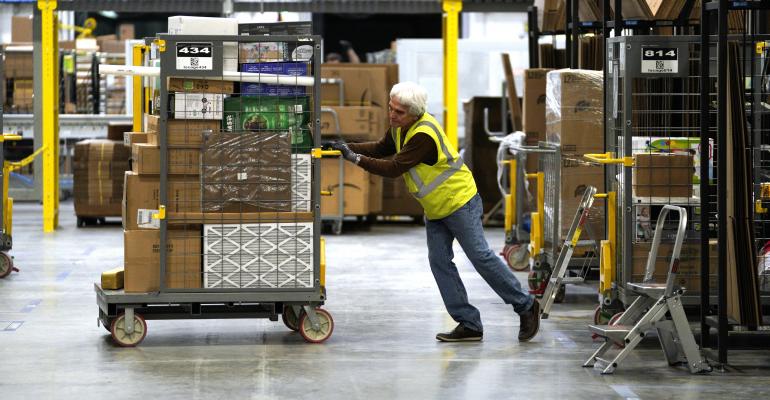The outlook for industrial real estate in 2019 is bright, with continued strength in property fundamentals, demand outpacing supply, rent growth and strong absorption squeezing already tight vacancy rates.
Investment sales brokers focused on the sector say buyers can expect higher prices in the sector this year, as competition for a limited number of available assets is likely to intensify.
“A lot of equity capital wants to establish or expand into industrial, so competition is putting upward pressure on values,” says Al Pontius, San Francisco-based senior vice president and national director of specialty divisions at real estate services firm Marcus & Millichap.
“Industrial pricing is strong across the country, but gateway markets like Los Angeles have the lowest cap rates and highest prices,” he adds, noting that both the competition among buyers and opportunities for higher yields are reasons why some institutional investors are entering secondary and tertiary markets. However, “a number of institutional investors will continue to focus on gateway markets because the liquidity characteristics are superior in both up and down markets, Pontius notes.
Today’s investors are willing to pay a premium for both class-A and class-B industrial assets because they are getting higher returns than in other sectors, says David Bitner, head of Americas capital markets research with real estate services firm Cushman & Wakefield. According to the Q3 2018 NCREIF index, annual ROI for industrial assets nationally averaged 14.17 percent, more than double the ROI for office (6.85 percent) or multifamily properties (6.35 percent).
High industrial ROI is the result of rapid growth in net operating income (NOI) per year, says Bitner. He notes that in Orange County, Calif., where industrial vacancy is under 2.0 percent, for example, NOI has been in the 9 to 15 percent range in recent years. But these increases in NOI are the result of rent growth, not cap rate compression. “In Orange County, cap rates are already as low as 3.5 percent in some cases, so there’s not much leg room left for cap rates to compress,” Bitner says.
Pontius agrees, saying, “Valuation gains will be about NOI growth, not cap rate compression.” He adds, however, that interest rates also affect investor decisions, even though the majority of acquisitions involve all-cash deals.
If long-term interest rates continue to rise, investors will expect cap rates to rise in response, Pontius says. But even though the rise in cap rates would not be expected to equal the move in interest rates, with cap rates moving perhaps by 30 to 50 basis points in response to a 100-basis-point increase in interest rates, property values would still decline without NOI gains offsetting that increase.
“I feel like there is an upward pull on rates. Confidence in the economy also rests partly on the interest rate environment,” Pontius notes.
Looking at fundamentals
In a fall webinar discussing the results of the ULI Real Estate Economic Forecast, panelist Tim Wang, director and head of investment research at New York-based real estate investment management firm Clarion Partners, noted that healthy consumer spending and a strong economy mean the industrial sector should continue to perform well for the foreseeable future.
“The industrial sector is really supporting the U.S. consumer,” he said. “So, if you’re betting that the U.S. consumer will continue to spend money, industrial warehouses will continue to do well.”
After seven years of declines, vacancy rates in the industrial sector leveled off in 2018 at a healthy 7.3 percent nationally and is expected to remain at that level through 2019, then tick up to 7.5 percent in 2020 due to new supply coming on the market, according to the ULI forecast. Additionally, rent growth slowed in 2018, leveling off at 3.9 percent overall. Rent growth is expected to dip to 3.3 percent this year and to 2.4 percent in 2020, reports ULI.
The hottest segments of the industrial sector will continue to be in urban infill markets and coastal locations near West Coast ports, as well as in the Southeast and New Jersey port markets, the report notes.
Another ULI webinar panelists, William Maher, director, Americas research and strategy, at LaSalle Investment Management, noted that the industrial sector has been the outperformer for the last three to four years, but the large construction pipeline presents a potential risk. Developers are selling properties at big premiums over replacement costs; however, if demand dips, the result may be oversupply.
Industry experts anticipate that in 2019, the industrial sector will perform great. “The question is what’s going to happen beyond that,” says Wang.

